If you teach Kindergarten, centers are probably a part of your day. When I taught Kindergarten, I incorporated centers into literacy, math, and free play, as well as occasionally during science and social studies.
Centers are a great way to get students actively involved in their learning. I’ve heard that Kinders’ attention span is about 5-6 minutes, which is incredibly short! That means that we need to try to minimize whole group sitting and listening time. In turn, we need to maximize hands-on, independent learning time. Having students work in centers gives them important independent practice time, and it also allows us to give children more individualized attention as they meet with us in small groups.
Although centers are a great addition to your Kindergarten daily schedule, getting them to work (and work well) is challenging. Something that has always been difficult for me is getting the kids who are working independently to…well…do their work!
I think that lots of routine-teaching and patience at the beginning of the year are essential for getting Kindergarten centers to work. My students have typically not attended preschool, so I always ease them into centers very slowly at the beginning of the school year. In this post, I’ll share with you a 6-step process that I use to introduce centers at the beginning of the year. At the end of the post, please comment with any additional ideas or suggestions that you have!
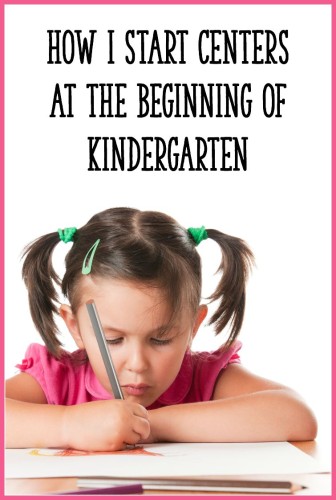
Photo credit: Shutterstock/Rido
Stage 1: Sitting and completing “pencil-and-paper” work.
Depending upon the population of students that you work with, it may or may not be a big deal for your kids to have to sit in chairs, stay put, and work on their own. For my kids, it was somewhat of a big deal.
At the very beginning of the year, as I introduced each alphabet letter, I had my kids complete handwriting sheets to practice forming the day’s letter. Having all students sit and complete the same worksheet like this is not something that I did often. However, at the beginning of the year, it was a simple activity that served a purpose: teaching students to stay in one place and complete work.
And honestly, I wasn’t really that concerned about their letter formation at that point in time. I viewed the handwriting sheets as a means to an end (having students work successfully in centers). We spent time discussing how to remain in one spot, use a quiet voice, independently use the restroom if necessary, etc. Although it was a good chance for them to practice letter formation, the main goal was to teach students basic procedures for completing seat work.
Stage 2: Sitting and completing “hands-on” work.
During Stage 2, we focused on the same skills (staying in one spot, working independently, solving problems with peers), but with hands-on activities rather than worksheets. The majority of my centers involved manipulatives of some kind, so I needed students to learn how to use materials appropriately.
Again, the activities in this stage were very simple. Every child in the class was doing the same thing, more or less. Some of the activities I used included: playing with pattern blocks or using them with pattern block mats, making letters/numbers/shapes from playdough, sorting magnetic letters, etc.
I was very intentional about what materials and activities I used during Stage 2. The activities I chose would ultimately become centers that students visited during the next few stages. That way, when it was time for the kids to begin physically rotating through centers, students were already familiar with the center activities so that they could focus on learning the routines.
Stage 3: Working without any interference from me.
During Stage 3, students were still completing either “paper-and-pencil” or “hands-on” work at their seats. However, I challenged them to work just like “big kids,” without any help or support from me. I stood at the back of the room and watched them work, but I expected them to solve minor problems on their own. If you have spent time during Stages 1 and 2 teaching independent work skills, transitioning into Stage 3 should not be difficult at all.
Stage 4: Rotating through non-academic centers.
Finally, in Stage 4, I set up different centers around the room and had students rotate through them. When you start Stage 4, it’s best if you have already decided how you’ll group your students, so that these groups can remain the same for a little while. Your groups will change, of course, as the year goes on – but it’s helpful if you can provide a bit of consistency at the beginning.
I’ve used a few different strategies to show students what group they are in and/or what center they should be working in. For a couple of years, I used kids’ photos on a pocket chart. I’ve also used photos on an interactive white board, including photos of the actual center locations and activities.
An important part of Stage 4 is teaching kids how to rotate between centers. Many teachers use two timers: one to indicate that students should clean up, and another to indicate that students should move to the next center. To maintain order, I only allow my students to switch centers when the entire classroom is quiet. Students must be sitting, pointing with one finger to the center where they will go next, and keeping another finger on their lips to show that they are quiet. When the entire classroom is ready, then they can switch centers. This procedure takes a while to teach, but it’s time well spent because it will save you instructional time later on!
During Stage 4, I placed one center activity at my small group table, so students would get used to working at my table as a center. However, I did not sit and work with a small group yet – I was rotating between groups and observing (though trying not to interfere unless it was absolutely necessary).
I also think it’s important to keep the centers relatively simple at this point (non-academic tasks like in Stage 2), so that students can focus on learning the routines.
Stage 5: Rotating through simple academic centers.
Stage 5 is pretty simple – continue practicing switching centers, but introduce academic activities into the mix. I prefer teaching students how to use one new center every couple of days, so as not to overwhelm them.
Stage 6: Rotating through academic centers, including a teacher center.
Getting to Stage 6 is the ultimate goal – having students rotate through academic centers, including a teacher center! However, something I had to remind myself was that just because our class got to this stage once did not mean that they would always be ready to remain in this stage.
In other words, during different times throughout the year, I had to back things up and re-teach. If students needed to go back to practicing center rotation with non-academic tasks, then that’s what we did. Sometimes I got a little peeved that we had to backtrack, but it saved instructional time and frustration later on.
Problem-solving
I wish I could tell you that using these stages works like magic and you’ll never have any problems with behavior or work completion in centers. 🙂 However, that was certainly not the case in my classroom (kudos if it is in yours!).
If I noticed that my kids were having problems during centers, I tried to find the root cause. Here are some possible reasons why students are not following routines or completing their work:
- The work is too difficult
- The work is too easy
- More practice with routines is needed
- Students are having difficulty working together
- Students don’t feel that they are being held accountable for their work
- Students are only 5 years old 🙂
Although I don’t think that we should lower our expectations because our students are young, we do have to keep in mind that immaturity can play a role in behavior during centers. I definitely don’t mean that we should give up on our kids or let inappropriate behavior slide! But I do think that we need to give them time and lots of explicit teaching so that they can be successful.
What are your thoughts about introducing centers? I’d love to hear from you! And if you’re looking for a complete literacy centers system for Kindergarten, click here or on the image below:

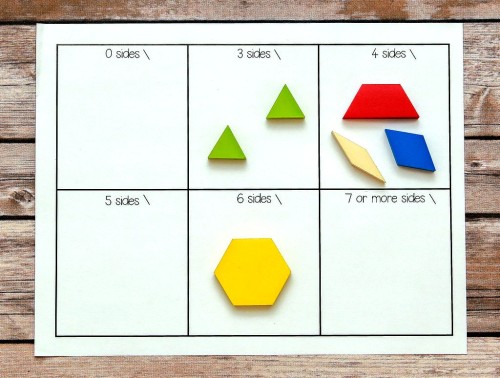
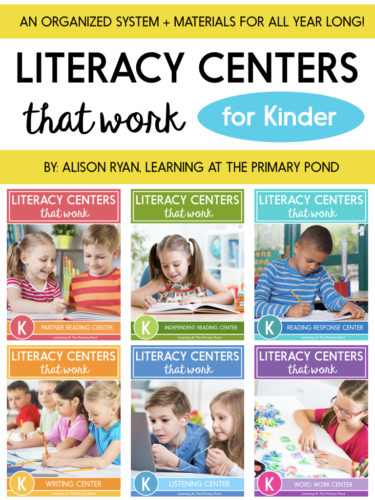
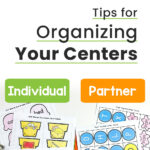
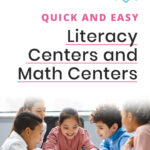
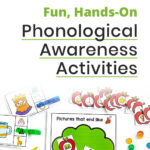
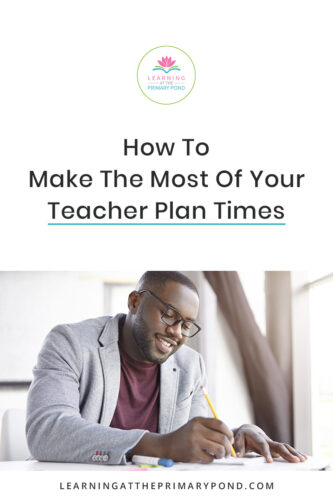
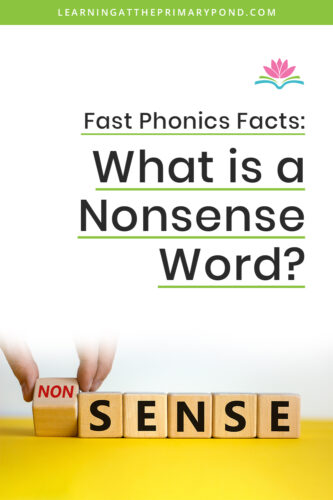
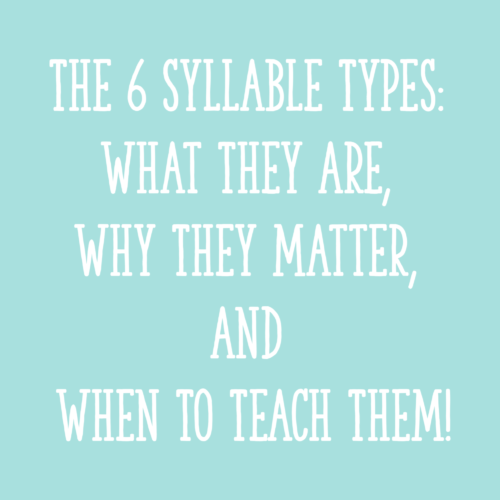





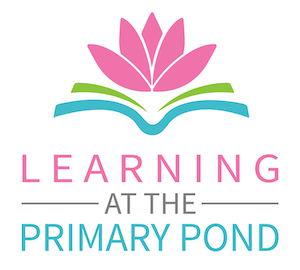
I will be trying this out this week. I have a good feeling it will work wonders with my kiddos! Thanks for the awesome info!
Awesome, Julie! Good luck – I hope it works out well for you!!
Alison
HI Alison,
This is the first year we are mandated to have centers, while also being given the time to do so! I’m excited, but nervous about it. You’ve helped so much! I love the idea of doing non-academic centers first. What are some tasks you’ve done in this step?
How many centers do your students typically go to each day?
Hi Janice! That’s exciting that you have time for centers this year! Some activities I’ve done for non-academic centers are: exploring pattern blocks, cutting practice (after they’ve already done some well-supervised practice, of course!), using stencils and colored pencils, exploring counting bears, and sewing cards. Some centers I’ve done that are a little more academic (but still very simple): sorting magnetic letters or numbers, name tracing practice, writing letters in sand, and alphabet puzzles. At first I start out with just one or two centers. Eventually they go to three different centers, as long as we have time for it.… Read more »
Thanks so much for the insight on how to begin centers.:) So much good info! I just moved down to K and was struggling with the idea of how to actually start centers. Today, I dove in. The kids have been sitting at color tables and have done some Stage 1 Activities-it’s been going really well. Today, I kept them with their same group members and had them in different areas of the room with no real academic goal. Group 1 explored with math manipulatives. Group 2 went to the writing center to “write a story”. Group 3 scanned QR… Read more »
You’re so welcome, Megan! I agree that getting started on centers can be kind of intimidating…just because there’s so many little things the kids need to learn. I know of some teachers who start full-out centers on the first day of K – I am definitely not that brave!! Anyway, I’m glad the first round went well for you! I hope things continue to go smoothly and you are enjoying your Kinders so far! 🙂
Alison
Thank you so much for the detailed information. I’m a grade 1 teacher of 21 super energetic and chatty kiddos! I have been struggling with this lot to get them to finish their work on time so we don’t end up with half done centers. Ii can’t wait to try some of your strategies.How long do you give your kids on each center?
Hi there! The amount of time just depends on the kids, but I usually try 10 at the beginning of Kindergarten, eventually working up to 15 minutes. At the beginning of 1st grade, I might try 15, but if your kids aren’t ready for it then there’s no harm in backing down! You can have them work up to 15 or 20 minutes in time. I hope that helps! 🙂
Alison
Thank you for thoughtfully explaining how you ‘teach’ centers to your class. You have offered many great ideas that I will be trying out in my first grade classroom. I have been working with literacy centres for a while now but I’m still challenged by a few problems. Perhaps you can help me solve them. 🙂 1. creating centres that take about the same amount of time to complete (e.g. one group is still at a listening station while another group has finished a word work activity) 2. what to do with fast finishers and 3. finding the time during… Read more »
Hi Sharon! So glad the post was helpful. 🙂 The three challenges you mentioned are definitely ones I have struggled with! What I try to do is to make my centers open-ended. For example, there was this one sight word game I used to have my kids play (I think it was called “Bang” or something like that) where they took turns drawing craft sticks. There was a sight word on each craft stick, and they had to read the sight word aloud and have the group check them. Some of the sticks said “Bang.” If a child drew one… Read more »
What types of non academic centers do you have e?
Hi Julie! I had things like drawing with stencils and colored pencils, those little “sewing” boards, blocks/legos, floor puzzles, etc. 🙂
Alison
hi, just wondering did you have the kids always choose where they were going, or was it organised like a tumble for each group?? really enjoyed your post, to the point, step by step….wish i could see it in action!
Hi Kate! I have done it so many different ways, honestly! At the beginning of the year, I do tell them exactly where to go. Once they’ve learned the routines, then I give them more freedom. And for certain types of centers (i.e. math centers), I always specify where they should go. I don’t know if that helps much – basically, I think that whatever works for you and your kids is the right way of doing it! 🙂
Alison
I love centers. Thanks for a clear way of rolling them out. I specially love your idea of pouring with their finger over their mouth where to go next. I found that taking time to celebrate great work enfourages students to to their best. During centers, after the first rotation I take note of star work and I even have a special spot for it on the wall and I put it up and tell my love bugs that this is college work! And they get really excited about having it on display. We continue through the rest of centers… Read more »
I love them too, Stephanie! And you’re welcome! I love the star work idea – positive praise has always worked well for my kiddos, too. Centers can be a lot of work to manage, but I think it’s worth it! Thanks for reading and sharing your idea!!
Alison
I love it! Your six steps sound a lot like the way that I introduce center time. However, once I start reading groups, I usually have to review the steps to reiterate working independently. This past year, I put on a toy princess crown during the times when I was with a reading group or testing. The students knew that unless it was an emergency, then they had to try to solve a problem themselves, or seek peer assistance. This took practice as well.
I always have to review, too! I think it comes with the territory of teaching the little ones. 🙂 Love the crown idea – thank you so much for sharing!
Alison
Hi Alison,
Great idea for progression of setting up centers. How long do you typically stay in one stage?
Hi Sharon! It totally depends upon the kids, honestly. If they are doing well, we spend 2-3 days in one stage. Some stages can take a week or more, especially right at the beginning of the year. I definitely don’t rush and try to be a good “kid watcher” when making my decisions!
Alison
This is aaaaaaamazing. I just have once question. When you say you teach one new center every couple of days, does that mean that for the first center, you still have the same amount of groups and everyone’s doing the same center activity? Or do you teach the center whole group? Or both?
Hi Mayra! I’m not sure I understand your question, sorry! I’ll try to answer it but just write back again if I misunderstood. I teach the center whole group to introduce it. Then, if we have enough materials for all the kids to try it at once, they all practice that day. If not, they work in the other centers we’ve learned, and I pull the kids, one small group at a time, to practice the new one.
Alison
How long(days, minutes) did you spend on each different stage?
Hi Chelsea! It honestly changes each year – I pay really close attention to how my kids are doing and just adjust accordingly.
Alison
Alison,
This post is fantastic and so helpful! This is my second year in kindergarten. I think my centers would have gone more smoothly if I rolled them out like this last year! Quick question for you…when do you start stage 1? The first week of school? The majority of my students have had preschool experience.
Hey Meg! So glad the post is helpful! I think you could have students start with stage 1 the first or second week of school. During the first week (which is usually a short week where I live), we typically just explore materials, and the paper and pencil work begins the next week. But I can see it going either way, especially if your kiddos go to preschool! 🙂
Alison
Hi Alison,
I’m a new kindergarten teacher and am on my second week. My students have been working on completing worksheets independently, but are still working towards it. When you say you introduce a letter worksheet is that one letter a day, and therefore, it takes 26 days for stage one to be complete? Or do you just do a couple of letters for about a week and then introduce centers? Asking because I am definitely looking to get my students to be more independent, so that I can being assessments.
Hey Gina, great question! I definitely don’t spend 26 days on stage 1. We only get thru a handful of letters. It’s just a “placeholder” activity, really (although it definitely has academic value, too!) until the kids are ready to move on. When the vast majority of your kids are able to work independently, you can probably move to the next stage! 🙂
Alison
Hello!
I loved this! I am going to be a brand new kinder teacher starting next fall. I am pretty much starting from scratch. I’m looking for lists of what types of materials etc. I should be gathering. I would love some ideas for literacy and math centers as well as just to have on hand.
Thanks!
Traci
Hi Traci!! Congrats on your new position! I will be doing lots of posts on literacy centers this summer, so definitely keep an eye out for that. This post may also help! https://learningattheprimarypond.com/blog/meaningful-centers-ideas-for-kindergarten-first-grade-and-second-grade/
Alison
You mentioned that you allow them to change centers once they are quiet, pointing 1 finger to the center that wish to go to and the other on their lips. You also said that you divide them into groups and try to maintain the same group for sometime. Then when the children want to move to another center, the entire group might not wish or point out to the same center. Children of 1 group may wish to go to 4 different centers.
How do you manage that?
Hi Joan! When I use that strategy, it’s when everyone is going to the same center at the same time. This is usually how I do literacy centers. When I do allow them to choose centers, I use a choice board, and they can go to another center when they are ready, at their own pace. 🙂
Alison
This is great. This is my first year teaching kinder and first year in teaching in a public school. Over what amount of time was this done? The first week or over 2 weeks. I am just trying to get an idea of what I should prepare for. Thanks so much!
Hi Danielle! I actually have an updated post that gives timeframes – I usually spend about 6-7 weeks on all of this in Kinder. You can read that other post here: https://learningattheprimarypond.com/blog/start-centers-beginning-school-year-k-2/
Alison
I will be teaching Kindergarten this year and will give your routine a try. I’m very excited to see it working with my kids! Thank you for sharing!
Hi Elaine! I hope it goes well! Have a wonderful beginning of the year!!
Alison
Love this… How long do you typically spend in each stage? I and my teammates are looking for ways to make centers run smoothly… This sounds like it may work!! Lol
Hey Michele! I’m glad this is helpful! This newer post goes into more detail and has the suggested timeframes: https://learningattheprimarypond.com/blog/start-centers-beginning-school-year-k-2/
I’ll also be doing a free online workshop on launching centers this summer. You can check the “Workshops” tab in early June to see when that will be! 🙂
Alison
Thank you for breaking this down. Last year was my first year in K & I struggle with center time. I love you’re progression. I did use my timer for cleanup & chimes did transition which worked well. My question is- I’m thinking of doing 2 sets of centers. Have you ever done this? Do you mix ELA & math or do a set of ELA centers then math centers? I’m really wanting to do morning centers & afternoon. Should I call one stations? So many questions! TIA
Hey Cait! I’m so glad this was helpful!!
I have definitely done math centers, too – separate from ELA. The rotation “logistics” stayed more or less the same. This helped prevent me from having to teach so many different procedures and routines! I did morning ELA centers and math centers. I just called them literacy centers and math centers.
I hope this helps!! 🙂
Alison
I actually teach center procedures through play tubs. We talk about how to use the materials, how to clean up and when to clean up with the use of music. We meet back at the carpet after each center rotation. my students are rewarded if they are able to make it back to the carpet before the music ends with a piece for Mr. Potato Head. I typically group my students at this time into pairs. When we meet back at the carpet, we discuss what we did, if there are questions or concerns, and prepare to move to the… Read more »
I love that, Laurie! Especially the Mr. Potato Head!
Do you play at all in this classroom? I feel that there is a lot of pencil and paper tasks and not the opportunity for some rich learning through play.
Hi Caroline! I absolutely fit play in! Here are a couple of blogs I’ve written regarding that topic: Play in Kindergarten and Dramatic Play